In Texas, there are over 100 invasive plant species recorded. Invasive plant species are plants not native to an area. Although many invasive plants wreak havoc in their environments, not all are harmful. Still, invasive species can easily take over and cause disruptions in the environment. For example, some plant species are competitive. An invasive plant species can compete against a natural species and win. If that native species provides food to native animals, this causes problems since their food source is now gone. But how can you tell in a plant species is invasive?
Although we won’t be going over the hundreds of invasive plant species, we are going to dive into 9 common invasive plants in Texas. Follow along to learn more about each.
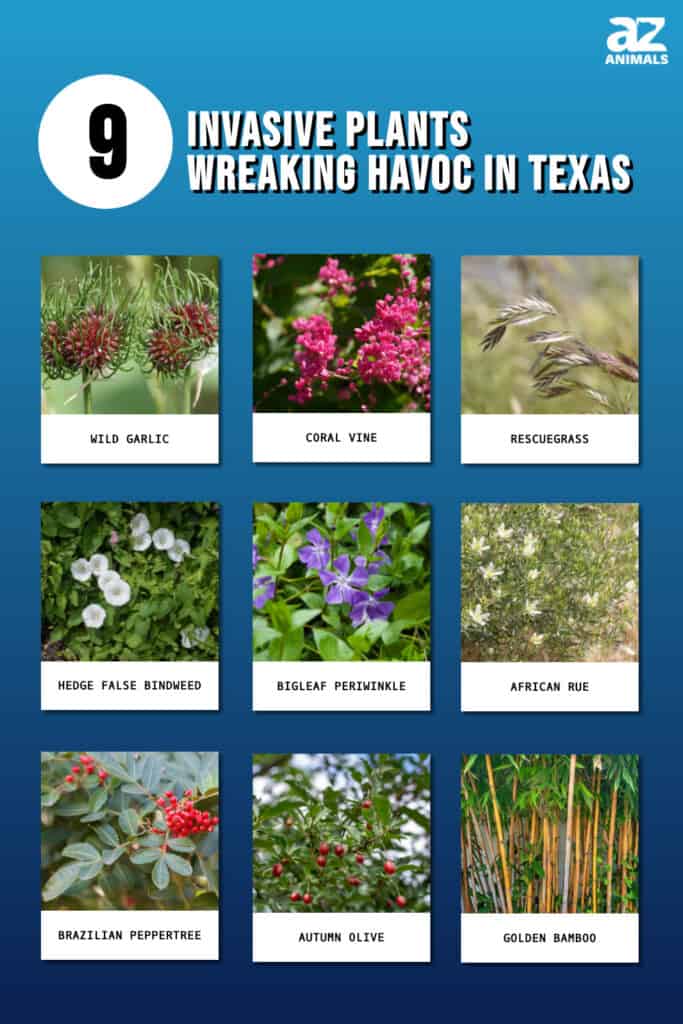
1. Wild Garlic (Allium vineale)
Not all wild garlic species are invasive in Texas. This specific variety is native to Europe, northwestern Africa, and the Middle East, but was introduced in Australia and North America. It’s considered a noxious weed. Interestingly, in the United States, if a farm animal eats the plant, a garlic-like flavor and odor can be found in dairy and beef products. Wild garlic has a small underground bulb and a main stem that bears 2-4 leaves and pinkish-green inflorescence.
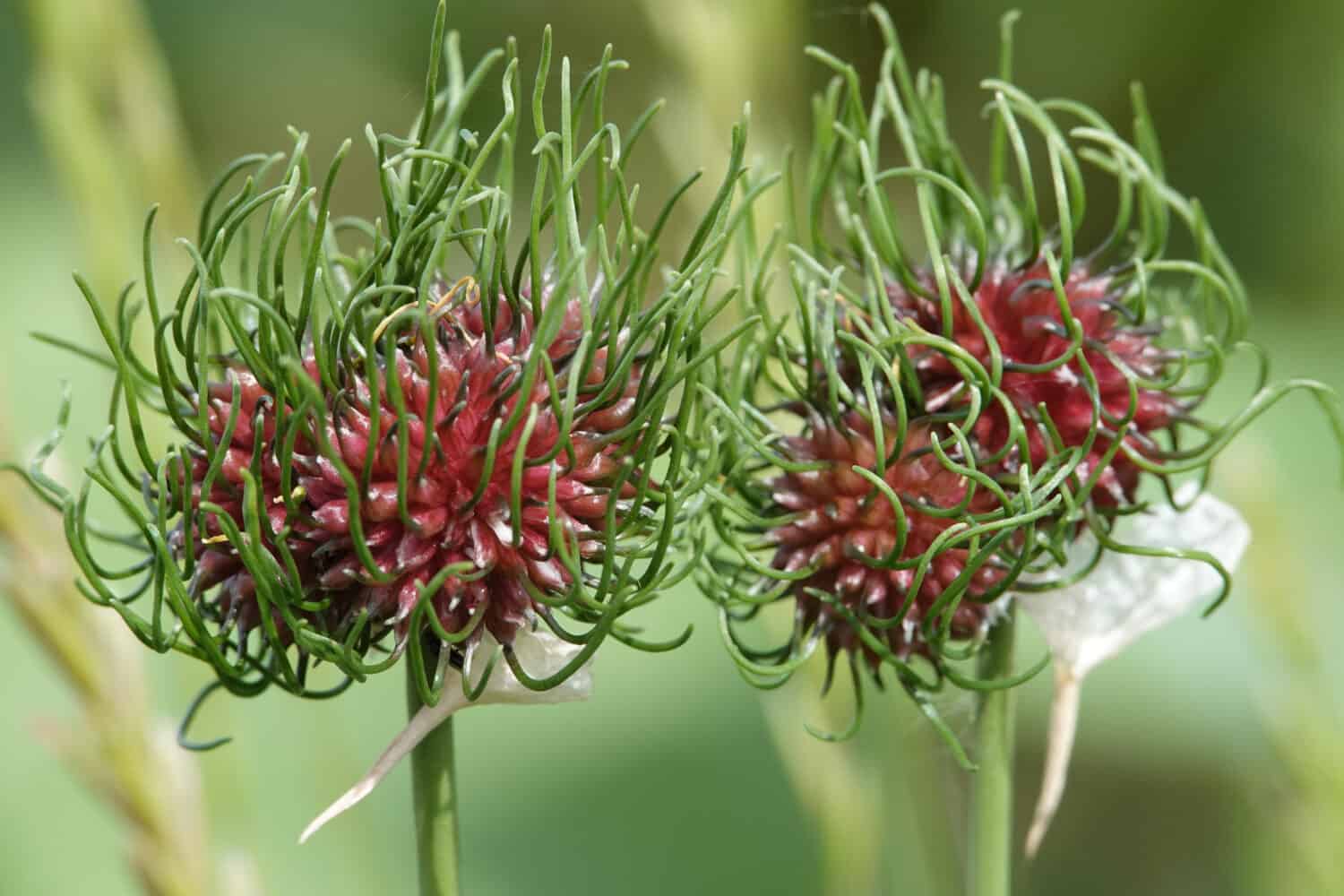
Wild garlic native to Europe is an invasive species throughout the United States.
©MGn42/Shutterstock.com
2. Coral Vine (Antigonon leptopus)
Another invasive Texas plant is the coral vine. This beautiful plant is native to the Pacific and Atlantic coastal plains of Mexico. Although not as common, this plant also grows in Central America. This invasive species also exist, although not originally, in the West Indies, South America, and parts of Asia and Africa. Coral vines are easy to spot because of their showy and vibrant pink flowers. They also have large and sleek heart-shaped leaves.
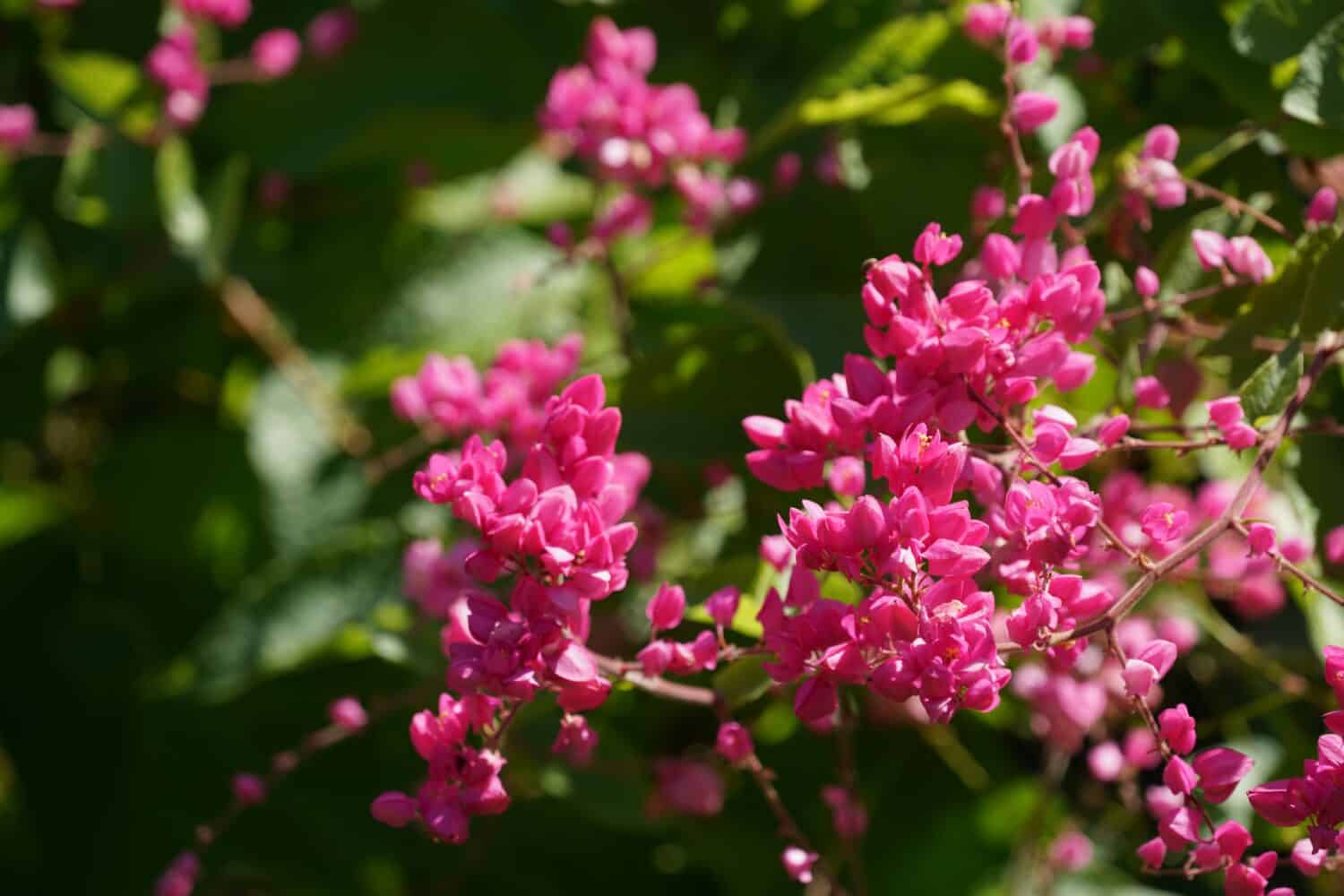
Coral Vine is native to the Pacific and Atlantic coastal plains of Mexico.
©Doikanoy/Shutterstock.com
3. Rescuegrass (Bromus catharticus)
Rescuegrass is another invasive plant in Texas. Although not native to North America, you can find it in many open and disturbed areas in the south, including Texas. Rescuegrass is native to South America. It’s also commonly called the grazing brome, prairie grass, and Schrader’s bromegrass. This grass grows quickly and abundantly. It’s often planted in areas affected by harsh droughts or winters. While some rescuegrass plants only reach about 8 inches tall, others can surpass 3 feet. It is sometimes confused with crabgrass or dallisgrass.
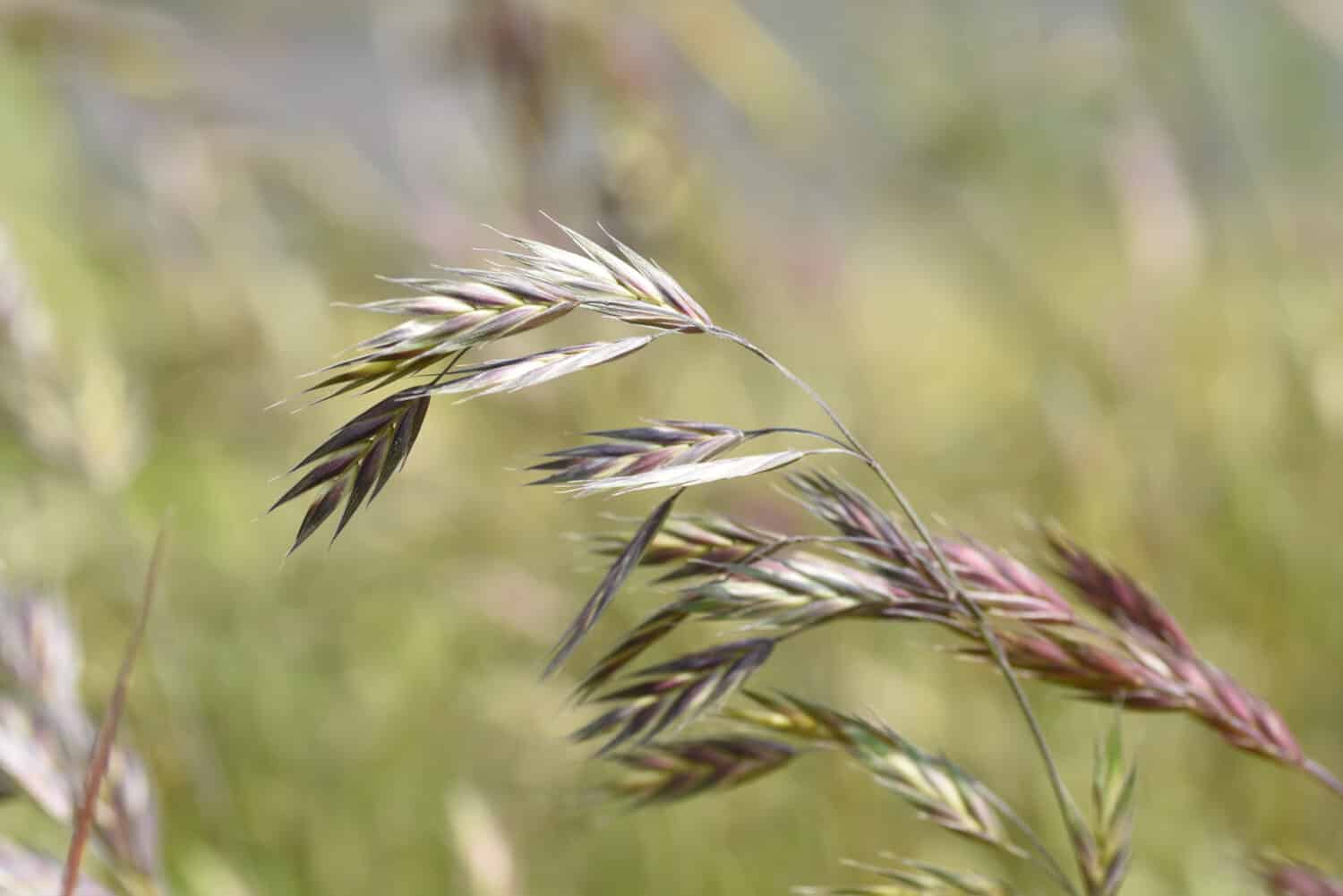
Rescuegrass is an invasive plant in Texas and throughout the southern part of the United States.
©tamu1500/Shutterstock.com
4. Hedge false bindweed (Calystegia sepium)
Next on our list of invasive plants in Texas is the hedge false bindweed. This plant is native to native to Eurasia, however, some specific subspecies are native to North America. It’s very common in the UK, especially in Britain. The hedge false bindweed twines around other plants and walls in a counter-clockwise direction. It can stretch more than 13 feet long, but it rarely passes 16 feet. Hedge false bindweeds have bright green arrowhead-shaped leaves. However, most people know this plant for its flowers. Hedge false bindweed flowers are white or pale pink and trumpet-shaped. This plant is very invasive and considered a weed.
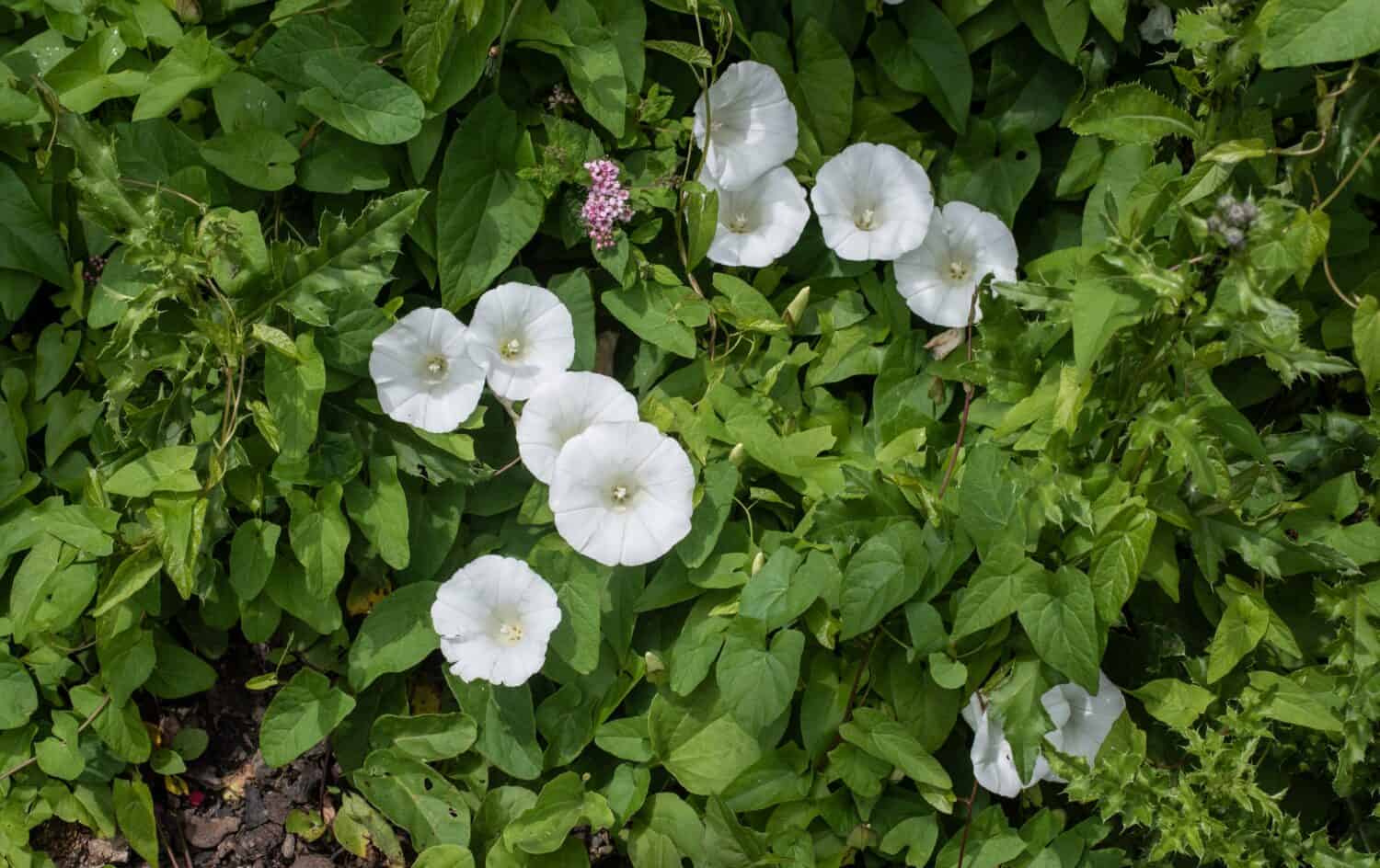
Some hedge false bindweed subspecies are native to North America.
©Carmen Hauser/Shutterstock.com
5. Bigleaf periwinkle (Vinca major)
Bigleaf periwinkle plants are beautiful, but they are an invasive species in parts of the United States, South Africa, Australia, and New Zealand. Instead, they are native to the western Mediterranean. There are two subspecies of this plant, with little differences other than geography and the width of the flower petals. Other names for the bigleaf periwinkles include large periwinkle, greater periwinkle, and blue periwinkle. These plants are trailing vines that can stretch up to 16 feet as a ground cover. It can also climb up to 27.5 inches. Bigleaf periwinkle flowers are violet-purple with a five-lobed corolla. These flowers bloom from early spring to autumn. In Texas, you can find this plant in wooded areas. Some people grow them as annuals in containers.
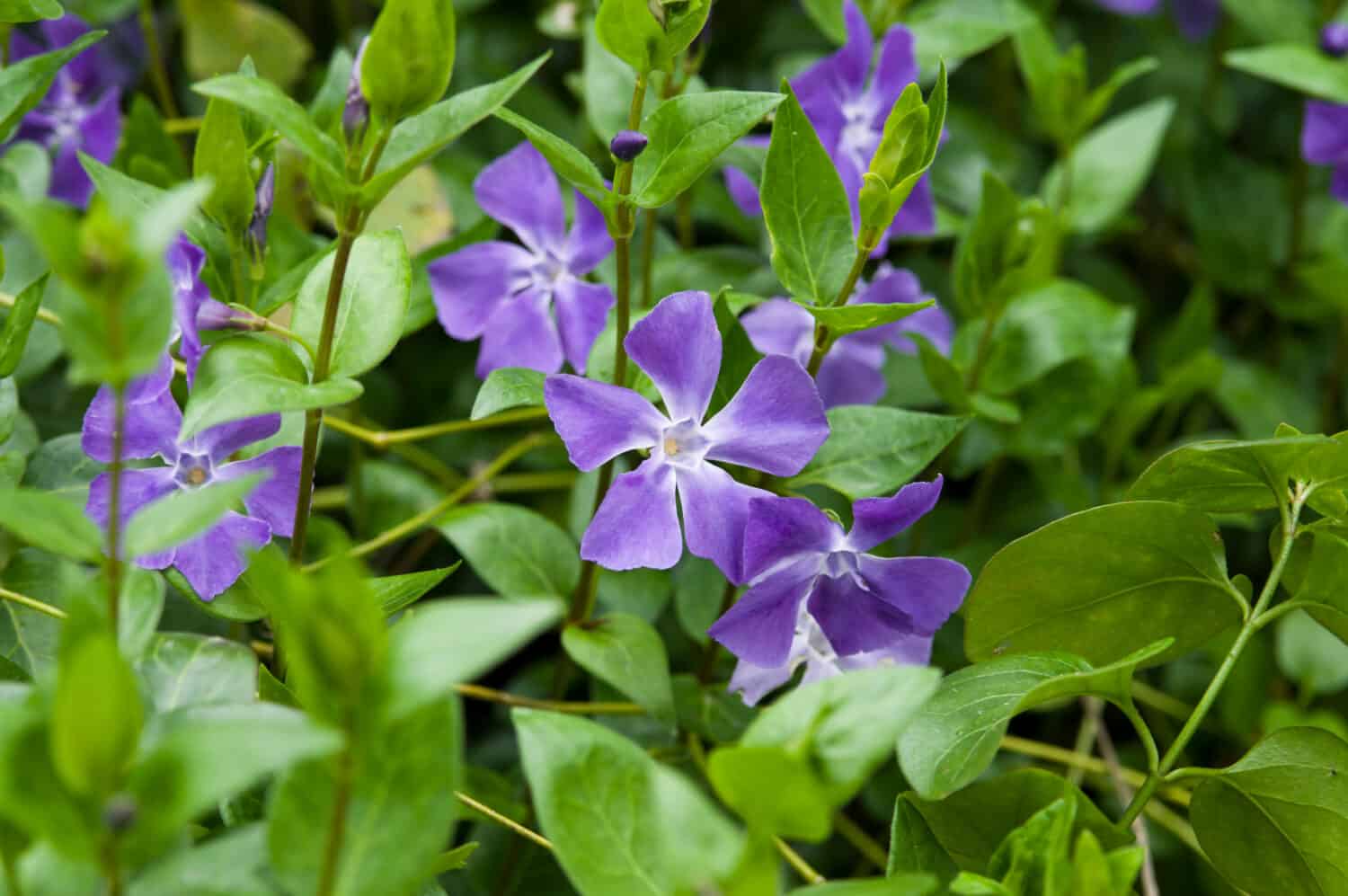
Bigleaf periwinkles are invasive vines in Texas but are sometimes grown as annuals in containers.
©zzz555zzz/Shutterstock.com
6. African Rue (Peganum harmala)
Another invasive plant in Texas is the African rue, a perennial, herbaceous, woody plant in the Nitrariaceae family. It is also commonly known as wild rue, espand, harmel, or Syrian rue. This beautiful flowering plant is native to a large range from Morocco to China. You can find this plant in many countries, including Spain, Italy, Kazakhstan, Yemen, Pakistan, and Saudi Arabia. It is an invasive species in North America, South Africa, Mexico, France, and Ukraine. It’s likely this white-flowered plant was first introduced to the United States in 1928 in New Mexico when a farmer planted a seed wanting to manufacture a dye called “Turkish red”. It quickly spread throughout the southwest but can be found in Montana, Oregon, and Washington. This plant has long roots reaching a depth of up to 20 feet and produces white or yellow-white flowers.
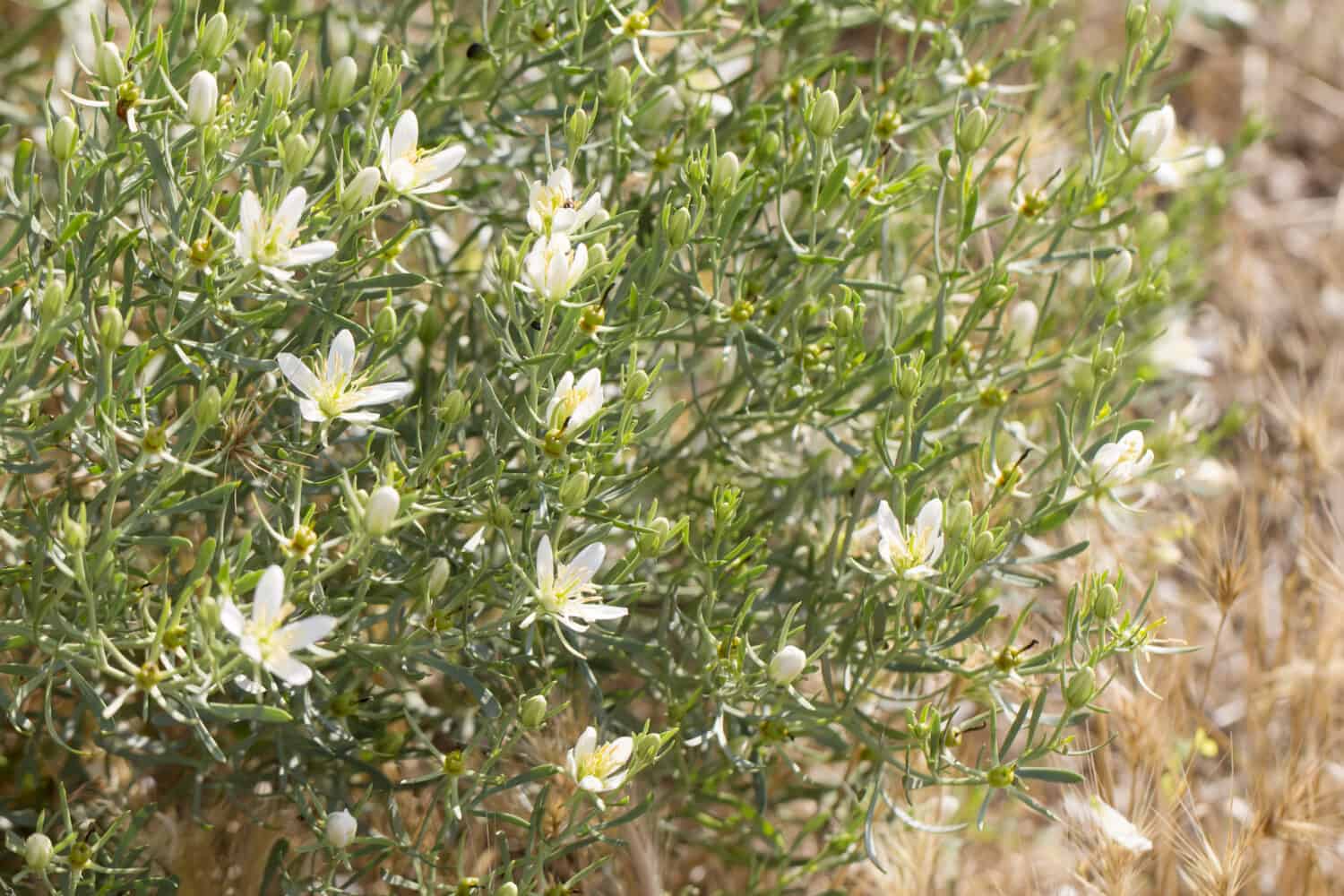
African rue plants are not native to Texas but easily grow throughout the state.
©Vitolga/Shutterstock.com
7. Brazilian Peppertree (Schinus terebinthifolius)
The Brazilian peppertree is a large and aggressive flowering plant native to Argentina, Brazil, and Paraguay. This plant, however, was introduced to some states in the U.S. including Florida, Texas, California, Hawaii, Louisiana, Arizona, and Nevada. It’s a member of the cashew family, Anacardiaceae, and goes by many names like rose pepper, broadleaved pepper tree, Florida holly, and Christmasberry tree. This small tree has a shallow root system and can reach up to 32.8 feet. It has dark green leaves and white or yellow clusters of flowers. From the flowers grow many small bright pink fruits. This plant grows well in most conditions, but especially in swamps as a semi-aquatic plant.
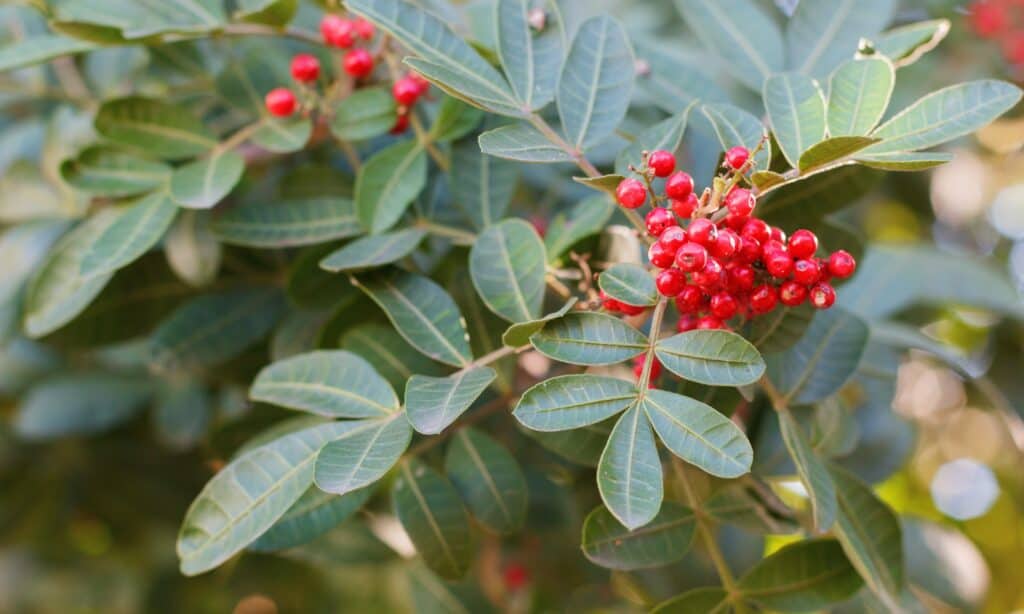
The Brazilian peppertree is an invasive species in Florida, Texas, California, Hawaii, Louisiana, Arizona, and Nevada.
©iStock.com/jantroyka
8. Autumn Olive (Elaeagnus umbellata)
The autumn olive is a small tree or deciduous shrub native to eastern Asia from the Himalayas eastwards to Japan. It is also very common throughout the United States, although not native to the region. Autumn olive trees are also commonly called Japanese silverberries or spreading oleasters. Although most plants remain smaller, they can reach up to 11 feet. These hardy trees have spiky thorns and bear clusters of fragrant and small white to yellow flowers. The flowers then develop small drupes usually less than half an inch long. Autumn olive trees are helpful, but can also harm the environment, especially in the eastern United States. For example, these plants pump nutrients and nitrogen into the soil but also destroy native plant communities by drastically changing the soil’s chemistry.
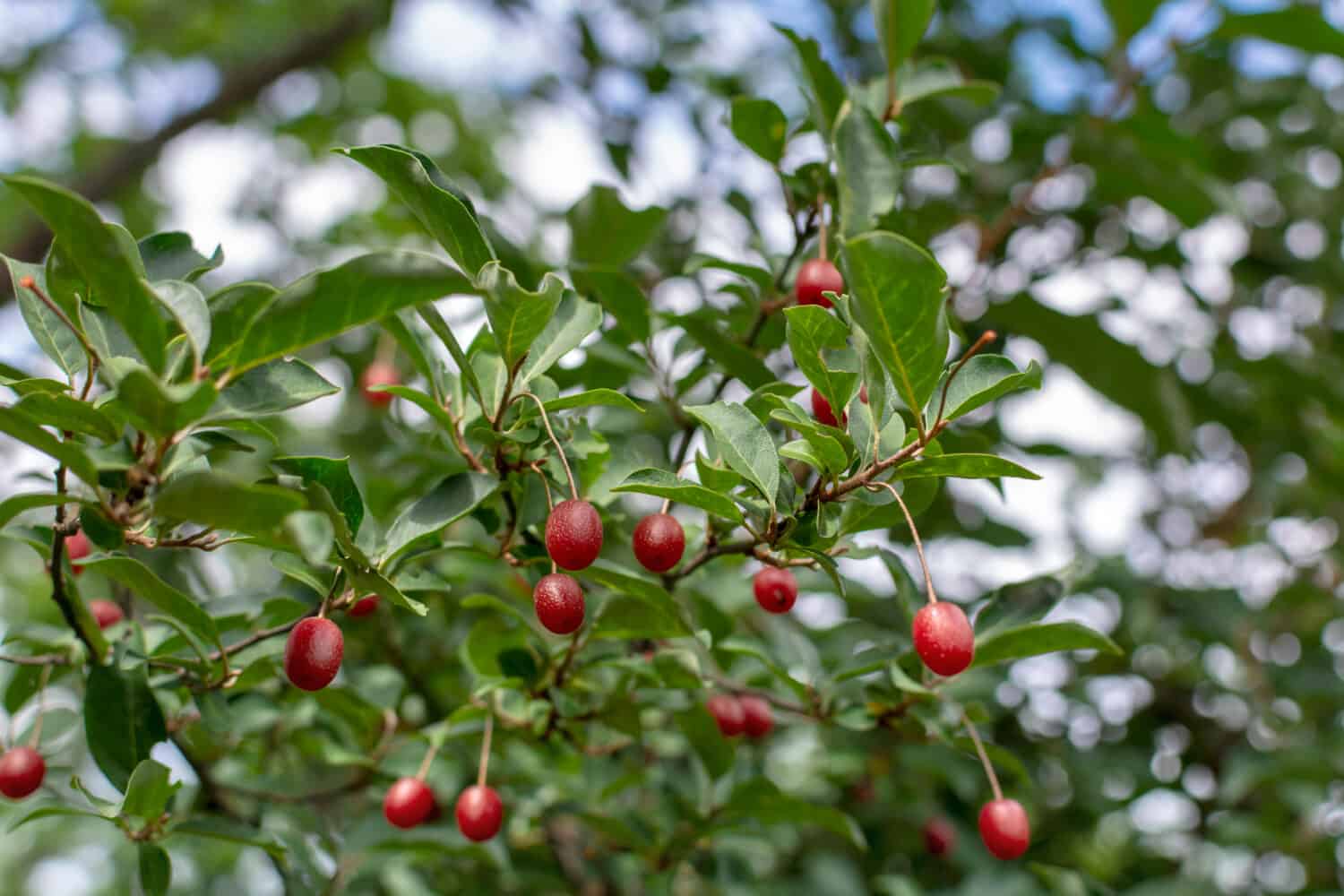
Autumn olive trees grow well in the eastern United States but can destroy native plant communities.
©Oksana Shevchenko/Shutterstock.com
9. Golden Bamboo (Phyllostachys aurea)
Last but not least is the golden bamboo. While it’s easy to grow golden bamboo in Texas and other U.S. states, this species is not native to North America. Instead, golden bamboo plants are native to Fujian and Zhejiang in China. Other common names for this plant include fishpole bamboo, monk’s belly bamboo, and fairyland bamboo. It is commonly grown as an ornamental plant for gardens but is very invasive and destructive. It grows quickly and crowds out native species in the wild. Golden bamboos are cold hardy and are typically 20 feet tall. You cannot grow this species in New York because it thrives in warm and moist conditions. Although it’s not easy to tell bamboo species apart, golden bamboos have a tortoise shell-like appearance on the lower part of the canes.

Golden bamboos grow well in the United States but are invasive species native to Fujian and Zhejiang in China.
©Phuwadon Phichairat/Shutterstock.com
Summary of 9 Invasive Plants Wreaking Havoc in Texas
| Rank | Plant |
|---|---|
| 1 | Wild Garlic (Allium vineale) |
| 2 | Coral Vine (Antigonon leptopus) |
| 3 | Rescuegrass (Bromus catharticus) |
| 4 | Hedge false bindweed (Calystegia sepium) |
| 5 | Bigleaf periwinkle (Vinca major) |
| 6 | African Rue (Peganum harmala) |
| 7 | Brazilian Peppertree (Schinus terebinthifolius) |
| 8 | Autumn Olive (Elaeagnus umbellata) |
| 9 | Golden Bamboo (Phyllostachys aurea) |
The photo featured at the top of this post is © Tyler Stuard/Shutterstock.com
Thank you for reading! Have some feedback for us? Contact the AZ Animals editorial team.






